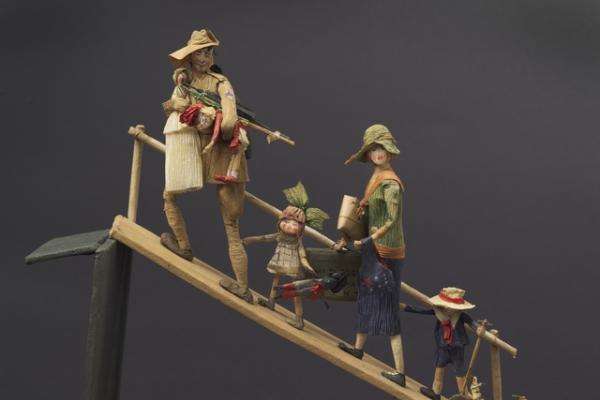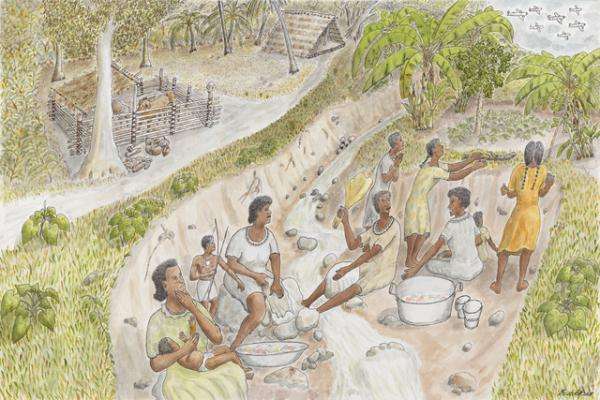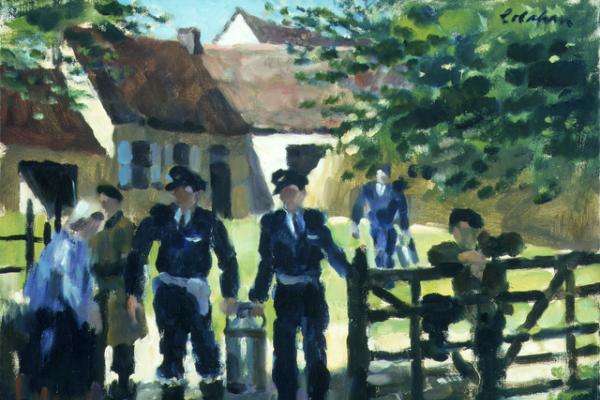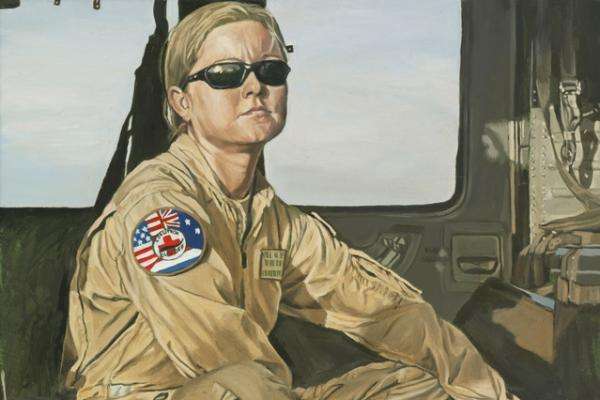Story telling through art
You have probably heard stories through books, television, music, games, speaking, and photographs. Art is also a way in which stories can be shared, through drawing, weaving, painting, sculpture, or collage. Art can be interpreted and explored through sight, sound, smell, touch and movement.
The Australian War Memorial has more than 38,000 works of art, relating to the experiences of Australians in wartime and peacekeeping. The works of art in the Memorial’s collection can tell us about events from the past, the people who have served and their families at home, the impact on civilians and society, and how people feel about war.
Sometimes the artists went to war and created art based on what they saw, but other times they imagined what it would have been like. Some of the works of art in the collection have been created by men and women in the Australian Defence Force.
Art allows people to express their thoughts and feelings in a creative way, and encourages the viewer to think about something from a different perspective.
Digger departs (Dinkum Aussie issue)
By Gladys Blaiberg
Koskergiz Kaubu Kerkerr ge [TSI Womenfolks of the War Era]
By Kapua Gutchen Senior
Milk for the mess
By Colin Colahan
Portrait, Corporal Dianne Cuttler, Kandahar
By Lyndell Brown and Charles Green
Recommended year level
This resource is designed for students from Foundation to Year 2.
How to use this resource
Teachers may like to focus on just one of the works of art, or compare and contrast the four selections, or visit www.awm.gov.au to locate other works that might be relevant for your students. These four selections relate to the First World War, Second World War, and the war in Afghanistan.
Before investigating the meaning and techniques associated with the works of art, you may like to stimulate curiosity and discussion by asking students:
What story might this work of art tell us?
Attached to each work is some background information about the artist/s and the content. Suggested questions and activities are also included.
Visual Arts F-2
Explore ideas, experiences, observations and imagination to create visual artworks and design, including considering ideas in artworks by Aboriginal and Torres Strait Islander artists.
Use and experiment with different materials, techniques, technologies and processes to make artworks.
Create and display artworks to communicate ideas to an audience.
Respond to visual artworks and consider where and why people make visual artworks, starting with visual artworks from Australia, including visual artworks of Aboriginal and Torres Strait Islander Peoples.
Humanities and Social Sciences (HASS) F-2
Skills
Pose questions about past and present objects, people, places and events.
Collect data and information from observations and identify information and data from sources provided.
Explore a point of view.
Compare objects from the past with those from the present and consider how places have changed over time.
Interpret data and information displayed in pictures and texts and on maps.
Draw simple conclusions based on discussions, observations and information displayed in pictures and texts and on maps.
Knowledge
F: How the stories of families and the past can be communicated, for example, through photographs, artefacts, books, oral histories, digital media and museums.
Year 1: Differences and similarities between students' daily lives and life during their parents’ and grandparents’ childhoods
Year 2: How changing technology affected people’s lives (at home and in the ways they worked, travelled, communicated and played in the past)
Cross curriculum perspectives
Aboriginal and Torres Strait Islander histories and cultures
OI.1: Australia has two distinct Indigenous groups: Aboriginal Peoples and Torres Strait Islander Peoples, and within those groups there is significant diversity.
OI.2: Aboriginal and Torres Strait Islander communities maintain a special connection to and responsibility for Country/Place.
OI.5: Aboriginal and Torres Strait Islander Peoples’ ways of life are uniquely expressed through ways of being, knowing, thinking and doing.
OI.6: Aboriginal and Torres Strait Islander Peoples live in Australia as first peoples of Country or Place and demonstrate resilience in responding to historic and contemporary impacts of colonisation.
OI.7: The broader Aboriginal and Torres Strait Islander societies encompass a diversity of nations across Australia.



